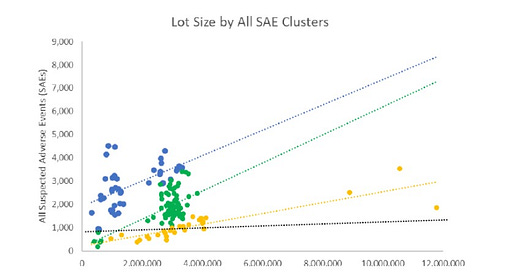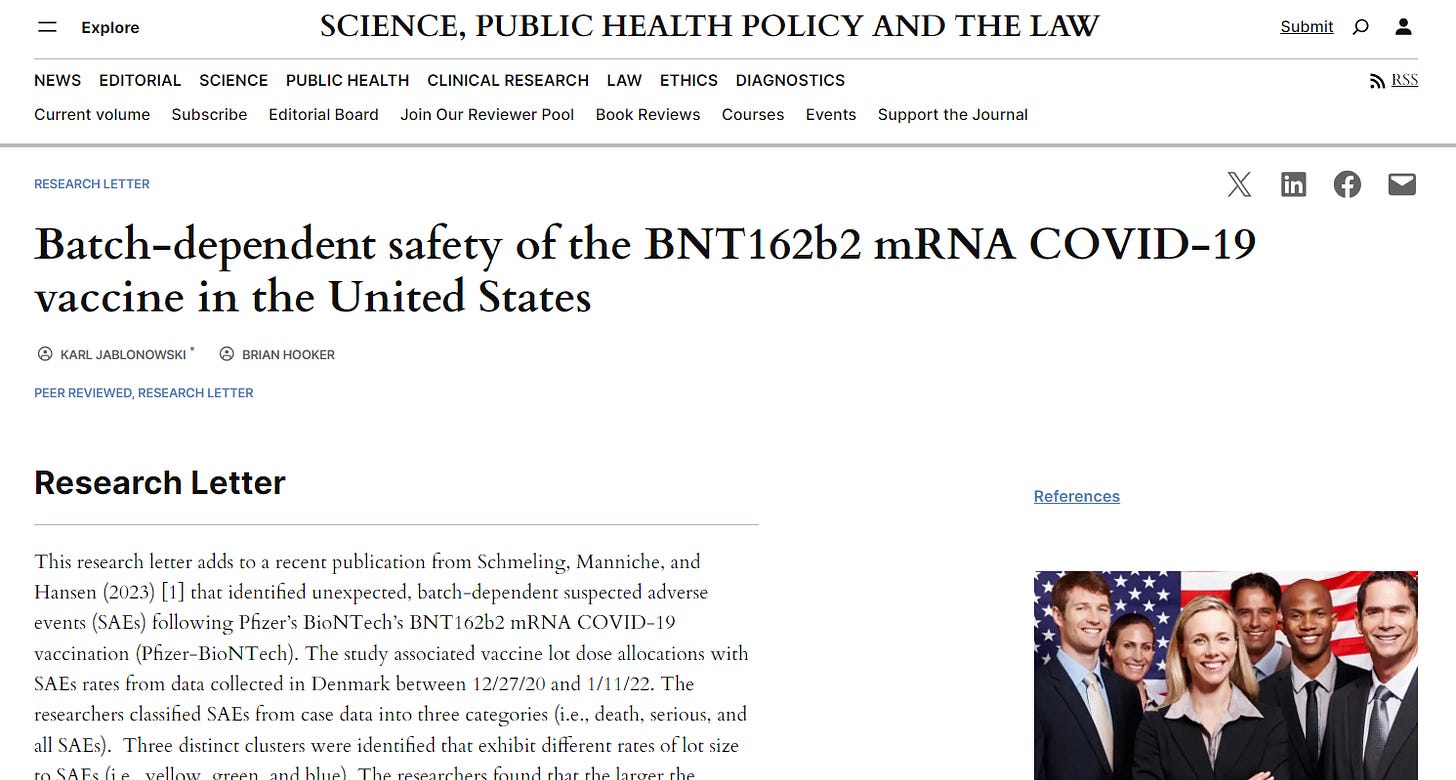Researchers Find Anomalies in COVID-19 Vaccine Batch Safety and Vaccine Safety Reporting
New study from Children's Health Defense Science Department
A peer-reviewed Research Letter by Jablonowski & Hooker (2024) of CHD Science Department provides a parallel analysis to a Danish study by Schmeling, Manniche, and Hansen (2023) that identified batch-dependent suspected adverse events (SAEs) following Pfizer-BioNTech COVID-19 vaccinations. The U.S.-based analysis, using VAERS data, applied similar methodology to explore whether the same patterns exist in the larger U.S. population.
Like the Danish study, the U.S. analysis identified three distinct clusters of vaccine lots with varying SAE rates. However, a significant difference emerged: while Denmark observed higher SAE rates with larger lot sizes, the U.S. data revealed the opposite—larger lot sizes correlated with fewer SAEs, showing a significant negative correlation. This difference underscores that while both countries show batch-dependent trends, the nature of the correlation varies by region.
Geographically, the U.S. study identified unexpectedly high death rates in states like Tennessee and Kentucky, as well as disparities in SAE distribution based on the type of vaccination site. Early vaccine batches sent to government agencies, hospitals, and universities showed higher injury rates than later batches distributed to pharmacies and grocery chains.
The significance of these findings is multifaceted. First, they confirm that batch-dependent variations in SAEs are not isolated to Denmark, raising questions about vaccine manufacturing and distribution consistency across regions. Moreover, the study highlights serious issues in data quality, including the high number of missing lot numbers in VAERS reports, which hampers the ability to assess risks fully.
Crucially, the public should know the factors influencing their risk of SAEs from medicines, including vaccines. Transparency in reporting and access to detailed, reliable data are essential for building trust and ensuring informed decision-making. Without precise, democratized data on lot variations and manufacturing quality, individuals are left with incomplete information that affects their ability to understand potential risks. The authors' call for improved pharmacovigilance and public transparency is thus a vital step toward safeguarding public health and ensuring accountability in large-scale pharmaceutical rollouts.
The Research Letter was published in the peer-reviewed journal Science, Public Health Policy & the Law.
Jablonowski, K and B Hooker. 2024. Batch-dependent safety of the BNT162b2 mRNA COVID-19 vaccine in the United States. Science, Public Health Policy & the Law (5): https://tinyurl.com/SCIPUBLHEALTH






I have always maintained that the early pfizer (purple topped vials), which first required dilution were more likely to cause adverse events than later vials for two reasons.
1. the PBS buffer resulted in an unstable formulations with agglomeration and aggregation leading to what is known as CARPA
2. they formed large particles which in and of themselves may cause toxicity
CARPA is complement activation. These researchers show this how the Comirnaty can cause this.
https://www.mdpi.com/1422-0067/25/7/3595
This is the question I’ve been asking since 2021 and met with eye rolls and blank stares. It seems to fit .